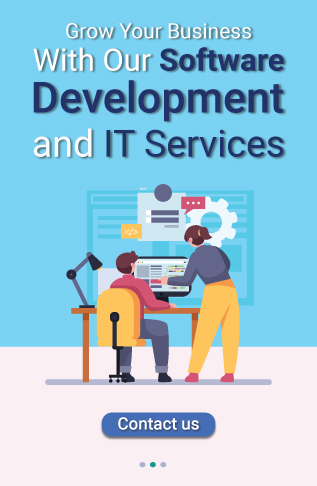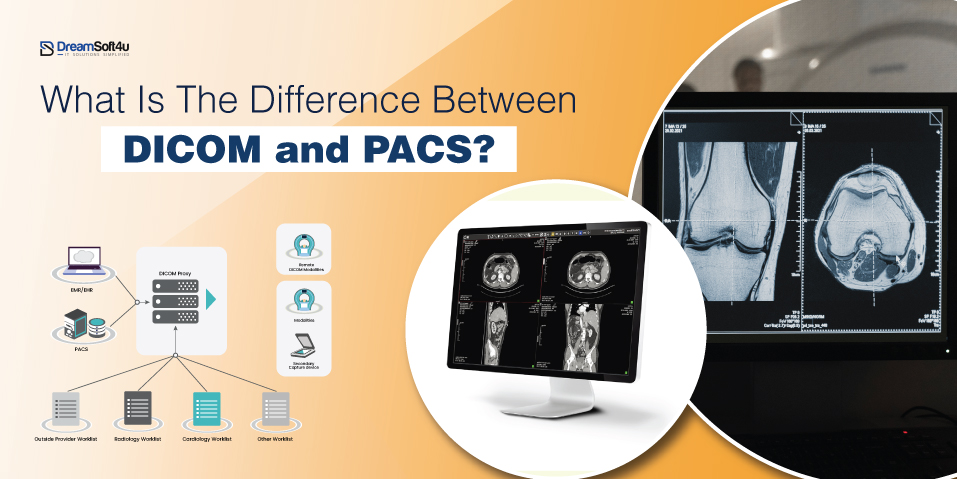AI in Telemedicine is evolving rapidly. It is not just about video consultations anymore. AI is used to identify diseases, recognise health risks, and improve patient care, from chatbots assisting patients to AI-based diagnostic systems that read medical scans. Technology is transforming healthcare to make it more innovative and more efficient.
Yet, the majority of health professionals are struggling to implement AI. The most significant challenges are:
- Shortage of AI skills
- Stratospheric prices
- Regulatory complexities
How do healthcare startups and hospitals implement AI and overcome these hurdles?
This is where Staff augmentation steps in as a one-stop solution. Through staff augmentation, healthcare providers can hire AI professionals on demand, gaining the talent they require affordably and effectively without long-term obligations.
If you want to adopt AI in telemedicine. But if you do not know about staff augmentation, then keep reading.
In this blog, we will understand how AI is transforming telemedicine, why staff augmentation is essential and how you can overcome these challenges.
Table of Contents
ToggleRole of AI in Telemedicine
Did you know? Nearly 75% of the deaths today are due to chronic diseases, such as cancer, diabetes and heart disease. They can all be eradicated with the solution offered by AI in telemedicine.
Telemedicine AI solutions are not mere automation. It assists in:
- Early disease identification: AI can sift through patient data to identify diseases before they become severe.
- Personalized therapies: AI tailors therapy regimens according to personal needs. It enhances patient outcomes.
- Accelerated drug discovery: AI accelerates research and gets life-saving drugs to market sooner.
- Streamlining operations: AI automates tasks like scheduling, compliance and reporting. It reduces cost and maximizes efficiency.
Benefits of Using AI in Telemedicine
Here are some key benefits of using AI in telemedicine:
Increase Revenue
AI enables physicians to provide premium services to acquire more patients with AI-based tools such as virtual health assistants and predictive analysis. Physicians are capable of providing personalized care and increasing patient satisfaction. This enables hospitals and clinics to implement high-value care plans, which bring higher revenues and offer better care.
Cut Costs and Improve Efficiency
AI automates activities like appointment booking, billing and patient medical records. This minimizes paperwork and allows physicians to spend more time with patients. AI will also enable hospitals to reduce errors, speed up processes, and prevent wasteful spending. It makes healthcare cheaper and more efficient.
Personalized Care for Better Treatment
AI learns a patient’s history, symptoms, and lifestyle to develop personalized treatment plans. Doctors do not take the jack-of-all-trades route but instead make more informed decisions based on real-time information. AI also monitors patient progress and recommends treatment changes for improved outcomes.
Faster, More Accurate Diagnoses
AI can scan test results, medical images, and patient histories instantly. It can identify diseases quicker and more precisely than the conventional approach, without human errors. With faster diagnosis, physicians can initiate treatments earlier, enhancing the recovery rate of patients.
Early Detection of Disease
AI can detect early warning signs of serious illnesses before they become symptomatic. It allows physicians to act earlier before diseases take hold. It’s helpful in cancer, cardiovascular disease, and diabetes, where earlier treatment is life-saving.
How Staff Augmentation is Transforming AI in Telemedicine?
Here is how staff augmentation is transforming AI in telemedicine:
1. Faster AI Implementation
Implementing AI in telemedicine requires skilled engineers, data scientists and AI professionals. Instead of waiting months to recruit and train an in-house team. Healthcare industry players can quickly onboard AI professionals with staff augmentation. This allows them to accelerate AI adoption and launch innovative products to market earlier.
2. Cost-Effective AI Development
Hiring a full-time AI team is expensive for hospitals and startups with limited budgets. Staff augmentation costs less as it allows organizations to pay for AI professionals as and when needed. This costs less for recruitment, salaries, and training and gives access to highly skilled professionals.
3. Access to Global AI Talent
Telemedicine app development by AI demands machine learning, natural language processing, and data analytics expertise. It is not easy to find such professionals in your immediate area. Staff augmentation gives healthcare professionals access to global talent at their doorstep, so they can collaborate with the best AI expertise available with new skill sets and innovations.
4. Scalability and Flexibility
AI projects vary in terms of complexity. Some demand short-term experts, while others call for an entire team to work continuously. IT staff augmentation services allow healthcare organizations to ramp up or ramp down AI staff based on project needs. This makes providers flexible and responsive to emerging technologies without being locked into long-term agreements.
5. Seamless AI Integration in Telemedicine
AI needs to be easily integrated with current healthcare systems such as electronic health records (EHR), patient monitoring software, and telehealth systems. Staff augmentation offers trained AI professionals familiar with healthcare compliance and regulation to ensure secure and effective AI integration.
6. Reduced Risk and Faster Problem-Solving
With medical AI issues ranging from data breaches to regulatory requirements, involving external AI experts with staff augmentation entails the hiring of professionals who have already completed comparable projects. It makes them able to detect the risks before they happen, rectify the issues quicker, and customize the AI solutions to fit industry requirements.
AI-Driven Solutions in Telemedicine Supported by Staff Augmentation
AI is revolutionizing telemedicine more brightly and efficiently. However, AI requires expert knowledge, which most healthcare professionals do not possess in-house.
Staff augmentation addresses this issue by offering on-demand AI professionals. They enable healthcare organizations to implement AI quicker and cheaper.
Some of the most significant AI-driven solutions transforming telemedicine through staff augmentation are:
1. AI Chatbots for Patient Interaction
Chatbots powered by AI enhance patient interaction and engagement. They respond to simple questions, triage and offer 24/7 support. Patients can inquire about medication, book appointments or report symptoms, and the chatbot replies in real-time. This minimizes waiting time and enables doctors to deal with critical cases. You can hire an experienced AI Chatbot development services provider to get your work done by professionals.
2. NLP for Faster and Smarter Insights
Natural Language Processing (NLP) assists in examining patient history, physician documentation, and medical reports. NLP identifies critical information from unstructured medical information in a manner where doctors can retrieve key information quickly. It enhances decision-making, minimizes mistakes, and improves overall patient care.
3. Machine Learning for Predictive Healthcare
Machine learning (ML) holds the key to early disease detection, customized treatments, and administrative automation. AI algorithms can sort through vast amounts of patient data, predict health risks, recommend treatments, and automate hospital operations. This improves patient outcomes and operational efficiency.
4. Custom AI Solutions for Seamless Integration
AI must smoothly interoperate with existing hospital databases, electronic health records (EHRs), and patient monitoring systems. Healthcare staff augmentation provides the capability of healthcare personnel to tap the skills of AI experts who make these solutions interoperable with their existing infrastructure, increasing efficiency and interoperability.
5. AI Consulting for Smooth Implementation
AI implementation is multi-faceted, with legal, regulatory, and technical aspects. Healthcare organizations need expert counsel to determine that AI solutions meet industry standards and security laws. Staff augmentation allows them to employ seasoned AI consultants who embed the implementation process.
6. Secure Data Migration from Legacy Systems
The majority of healthcare organizations still retain legacy systems that store patient data in unusable forms. AI-driven solutions aid in completing the safe migration of patient data to modern platforms to make data more usable, accessible, and analyzable and improve security and compliance.
Challenges Associated with Implementing AI in Telemedicine and Their Solutions
AI is changing telemedicine, but it is also causing a few problems. The list of top issues with their solutions is provided below:
1. Biased AI Models
AI learns from data, and faulty or biased data will lead to false diagnoses. For example, if an AI is trained using data from one geographic location, it will fail to work on patients from a different geographic location. This will lead to misdiagnosis, wrong treatments, and legal issues.
Solution: AI systems need heterogeneous data sets to give unbiased outcomes. Regular updates and testing by AI experts guarantee low bias and high accuracy.
2. Data Privacy and Security Risks
Telemedicine is based on patient confidentiality. When security is compromised, patient information can be hacked or leaked. It may result in fines and loss of patient trust. Healthcare organizations are experiencing increased cyberattacks, and data protection is a priority.
Solution: There must be strong encryption, secure storage of data, and HIPAA, GDPR, and other regulatory compliance. Cybersecurity professionals can stop breaches and safely handle data.
3. Difficulty Integrating AI with Legacy Systems
The majority of hospitals still use outdated IT systems. These are not AI-integrated, and therefore, integrating them is a time-consuming and expensive affair. Without integration, AI tools cannot function optimally, and their effect is restrained.
Solution: Healthcare professionals need to upgrade their IT infrastructure step by step. Integration specialists help in connecting AI technology with existing systems to facilitate smooth functioning.
4. Ethical Concerns in AI Decision-Making
AI helps doctors but cannot replace human judgment. If the AI is making a wrong diagnosis, who is to blame? Doctor, the hospital or the AI programmer. If there are no ethical guidelines, patient safety could be compromised.
Solution: There have to be strictly defined ethical guidelines for the usage of AI enacted by medical practitioners. AI needs to support and not replace doctors. Doctors, AI engineers, and attorneys must collaborate.
5. High Development and Maintenance Costs
AI technologies require advanced technologies, qualified professionals, and regular maintenance upgrades. This might be costly to small healthcare providers. Some of the costs are:
- Building AI-powered cloud platforms
- Training machine learning models
- Monitoring and improving AI performance
Solution: Instead of maintaining an in-house team, vendors can use staff augmentation to have AI experts join only when needed. It is economical and delivers the best AI solutions.
6. Complex Regulatory Compliance
The healthcare segment of AI has to comply with stringent laws such as HIPAA, GDPR, and FDA regulations. Fines and legal trouble await for non-compliance. With regulations differing between regions, compliance can be further convoluted.”
Solution: Healthcare providers need to collaborate with compliance specialists to ensure alignment with AI’s compliance with all legal and industry standards. This can help stay in compliance and keep trust.
7. Resistance to AI Adoption
Some medical professionals fear that AI will replace them. Others are not taught how to utilize AI tools optimally. Without proper onboarding, AI deployment can be slow and ineffective.
Solution: Staff augmentation enables the training of healthcare staff on AI technologies. Through experiential training, staff can apply AI confidently, streamlining processes and enhancing patient care.
Key Use Cases of AI in Telemedicine
Here are some use cases of AI in telemedicine:
1. Virtual Consultations with AI Assistance
AI helps physicians by analyzing patient symptoms, medical history and test results prior to consultations. This reduces consultation time and enhances the accuracy of diagnoses. AI chatbots also help by collecting general health information from patients before consulting a physician. It simplifies the process and reduces the time needed to complete it.
2. Automated Administrative Tasks
AI automates tasks like scheduling, billing and insurance verification. This lightens the workload of healthcare providers and enhances patient services. AI doing administrative tasks allows physicians and nurses to have more time working with patients than on paperwork.
3. AI-Powered Dental EHR Systems
AI improves Electronic Health Records through simplified data entry, patient record management, and oral health status prediction. Dentists gain immediate access to complete patient histories, allowing them to make more precise diagnoses and more effective treatment plans.
4. AI-Driven Medical Imaging Analysis
AI improves the medical imaging process by identifying diseases. Such as tumours, fractures and heart diseases at an earlier and more precise stage. AI reads X-rays, MRIs, and CT scans quicker than human professionals. It lessens the chances of misdiagnosis and allows for immediate treatment.
5. Personalized Treatment Plans
AI examines a patient’s health history, lifestyle and genetics to develop personalized treatment plans. This guarantees that every patient receives the best care available based on their unique health requirements. AI also predicts health risks. It enables preventive care before the conditions become uncontrollable.
Future of AI in Telemedicine
Telemedicine AI’s future will render healthcare more competent and more convenient. AI solutions will allow physicians to diagnose illnesses earlier, suggest customized treatments and monitor patients remotely. Chatbots and virtual assistants will provide instant healthcare advice. It avoids delays and improves patient care. AI will also optimize hospital processes by handling administrative work and medical records. With continuous innovation, telemedicine will become more accurate, affordable, and accessible, delivering quality healthcare to all, irrespective of location.
Planning for implementing AI in Telemedicine?
We’ve a team of professionals who offered tailored services as per business needs
Conclusion
AI is transforming telemedicine, making healthcare more accurate and accessible. However, adopting AI in telemedicine is a big challenge. It can be resolved by staff augmentation. It helps healthcare providers adopt AI smoothly and cost-effectively. We hope this guide helps you understand the role of AI in telemedicine, how staff augmentation can help adopt AI in healthcare and its future scope. Now, it’s your turn to consider staff augmentation and hire AI experts to embrace AI in telemedicine smoothly without any complications.
DreamSoft4U is a leading IT solution provider that offers staff augmentation services and helps businesses connect with top, talented professionals at affordable prices. Contact us today and get your best-skilled team to adopt AI.
FAQs
1. How is AI transforming telemedicine?
AI helps doctors diagnose faster, detect diseases early, and create personalized treatments. It also automates tasks like scheduling and medical records.
2. Why do healthcare providers need AI experts?
AI is complex. Experts help build, integrate, and manage AI tools to improve patient care and hospital efficiency.
3. How can staff augmentation reduce AI implementation costs?
It lets healthcare providers hire AI experts only when needed, avoiding full-time salaries and training costs.
4. Can AI-powered chatbots replace doctors in telemedicine?
No. Chatbots assist with simple tasks, but doctors are needed for diagnosis and treatment.
5. Is AI in telemedicine safe and compliant with regulations?
Yes, if properly implemented. AI must follow healthcare laws like HIPAA and GDPR to protect patient data.























